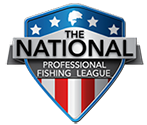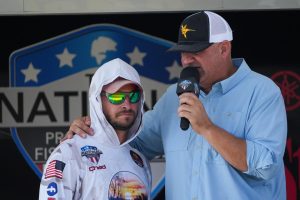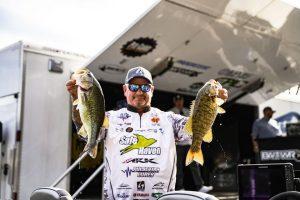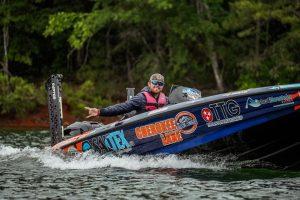Story by Ken Duke
My new word is “tariffied,” and I coined it at ICAST 2025. A lot of media people at ICAST were focused on new products (there were enough “fuzzy dice” baits to equip a Las Vegas casino), but I was more interested in the “vibe.”
What’s the attitude and level of optimism or pessimism among the manufacturers on the show floor? There were roughly 550 exhibitors there, and their attitude toward the business of fishing is a far better barometer of things to come than what new products are being introduced.
As always, there’s a significant amount of posturing that goes on anytime businesspeople gather. No one wants to admit that things are tough or to show their soft underbelly. That could look weak, make a company appear to be struggling, or even reflect leadership or management problems.
On the other hand, few companies want to appear cocky or too optimistic. If projections are higher than performance, someone may have to pay.
So, most tackle executives start their commentary like this:
“We’re doing really well, and our sales and projections are actually up, but I know that a lot of our competitors are having serious issues.”
Translation: “We’re having issues … but I hope our competition is having the same issues so that we’re not the only ones struggling.”
In recent years, tackle companies have faced devastating supply chain and sourcing problems, and there are always challenges associated with our apparent inability to grow the sport, but this year the cloud looming over the tackle industry—as well as almost every other industry in America and much of the rest of the world—can be summed up in a single word.
Tariffs.
President Trump is using tariffs in his attempt to balance the playing field of international trade relations. I’m optimistic that it will work, but for long term gains there are sometimes short-term losses, and that’s where companies may find themselves if their products are coming from other countries.
I’m guessing you’ve heard all of this. I’ve certainly been getting an earful. What it means to the American fishing industry—where very few products are made exclusively from materials sourced domestically—is that companies are holding their collective breath, waiting for answers to questions like “How much?” “How soon?” and “How long?”
The answers to those questions will go a long way toward answering “How much of our increased costs should we pass along to consumers?” “How soon should we start doing that?” and “How much will it impact our sales and bottom line?”
Meanwhile—as executives make their best guesses at what those answers might be—attitudes seem to be stabilizing … at least a little. And companies are forced to budget for the coming year and plan for the coming tackle season.
After all, like it or not, it’s time to start putting those new products into production or risk loss of market share. It’s time to start budgeting for marketing efforts, though that will likely not be finalized for several months. And it’s time to ramp up or downsize based on anticipated revenues and responsibilities.
After the boom of COVID and a gain of 8 million anglers, our industry suffered the bust of supply chain disasters and the disappearance of those anglers.
We’re desperate to find optimism but challenged by uncertainty.
In the end, fuzzy dice baits will never be more than a miniscule blip in the marketplace.
For now, our watchword is “tariffied.”





